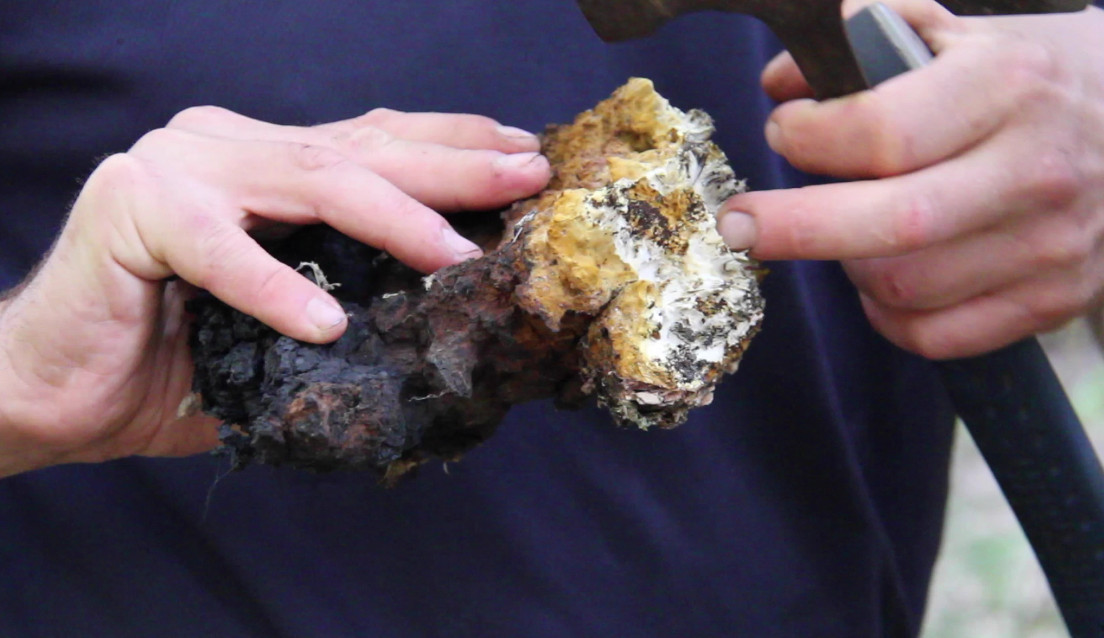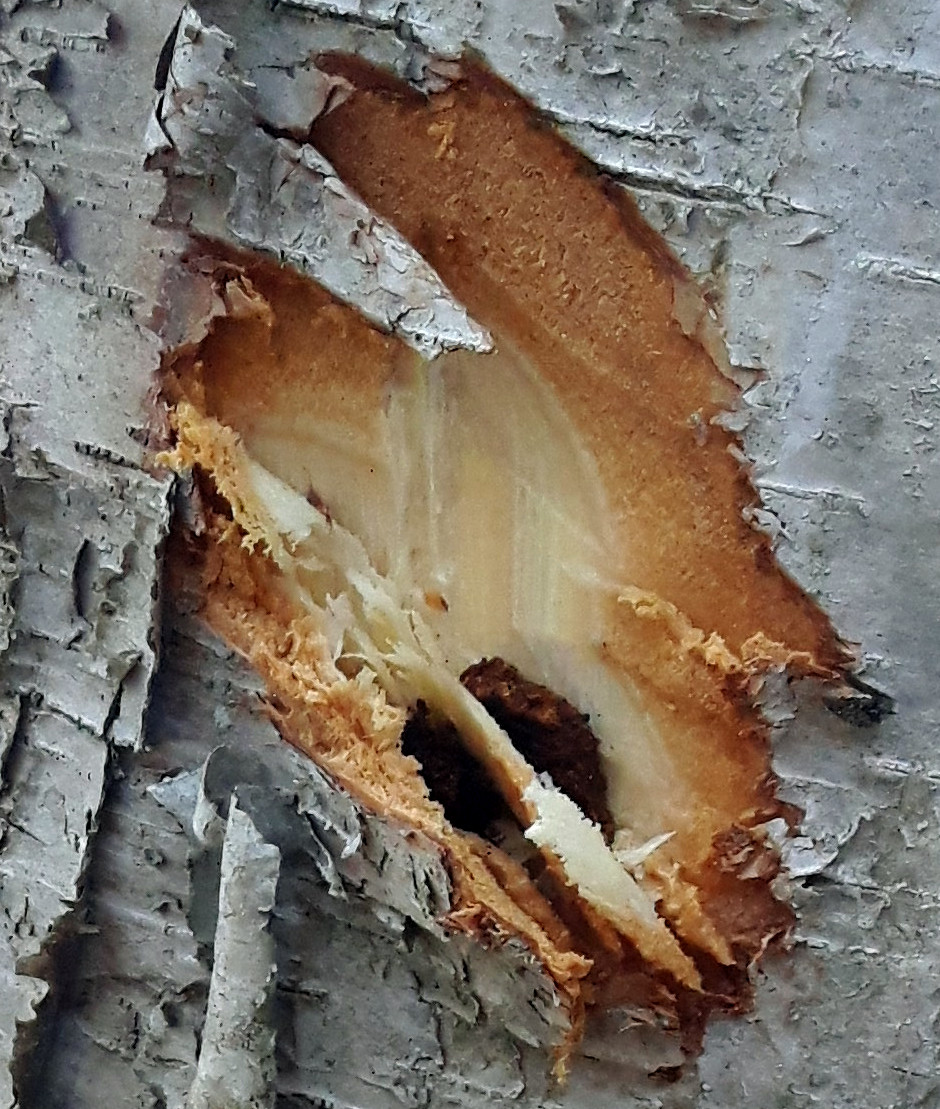 When chaga infects a living birch tree, the tree tries to protect itself by creating a very dense layer of wood in order to compartmentalize the mushroom on the inside. When this happens the mushroom can consume everything on the inside of the tree but it can’t attack any of the new growth. So the tree lives as a hollow tree that little animals can use as a home.
When chaga infects a living birch tree, the tree tries to protect itself by creating a very dense layer of wood in order to compartmentalize the mushroom on the inside. When this happens the mushroom can consume everything on the inside of the tree but it can’t attack any of the new growth. So the tree lives as a hollow tree that little animals can use as a home.
Chaga, however, knows how to mechanically burst through that barrier so it can reinfect the tree. It does this by building up a mass of mycelium which we know as the chaga conk. Because chaga can do this it has evolved to grow very slowly with the tree for decades.
Nevertheless, eventually chaga reaches a certain maximum size at which point it finally girdles the tree and kills it. However, when we harvest a mature chaga that is near this maximum size, the tree is able to successfully re-compartmentalize the chaga infection on the inside of the tree. Because chaga doesn’t have enough ‘food’ to burst through that barrier again it eventually runs out of food on the inside of the tree and dies. This allows the tree to keep on living as a hollow tree.
When chaga dies this way, it’s never able to produce spores. That means chaga is never able to reproduce in that area. This is why chaga is rapidly dissappearing from our forests and not coming back.
What we can do about it
We are at a point with chaga where many harvesters are revisiting sites that have already been cleaned out.
For the sake of chaga’s future we need to re-inoculate the trees we’ve been harvesting. Though there is no way to control whether an individual decides to also inoculate new trees this is not necessary to sustain chaga. It is, however, necessary for harvesters to give the chaga they’ve just harvested a chance to continue growing so it can eventually produce spores when the tree does finally die. Inoculation takes less than a minute.
The easiest way to re-inoculate a birch tree with chaga is to use the conk which has just been harvested to re-introduce the fungus to a new location on the tree, usually the opposite side of the tree.
How to re-inoculate chaga

Immediately after harvesting a chaga conk, collect a 1/2″ cubed piece of chaga from the actively growing layer of the freshly harvested conk. The actively growing layer is the part of the chaga conk which was closest to the tree. It’s best to choose a piece of fresh chaga that is soft and light in colour and not dried out. The best time to do this is late fall through to late spring. Chaga harvested during the summer may have a harder time re-establishing itself because things are dryer and warmer.

Use a hatchet to make a wedge in the bark of the birch tree on the opposite side to where the chaga was growing. Or if the chaga was higher than 10 feet then re-inoculate at ground level on the north side because chaga likes things cooler.
The wedge should go well through the bark and into the wood. The wedged should stay attached to the tree so that it creates a tight crevasse. Jam the piece of fresh chaga conk firmly into this crevasse.
That’s all there is to it. If things go well, then this piece of chaga will continue growing into the wood and may even reconnect with the original mycelium. Eventually, after the tree eventually dies, chaga will produce a large mat of blueish grey pores all along the surface of the tree underneath the bark. This is the fruiting body. It will produce spores which will permit chaga to continue reproducing.
